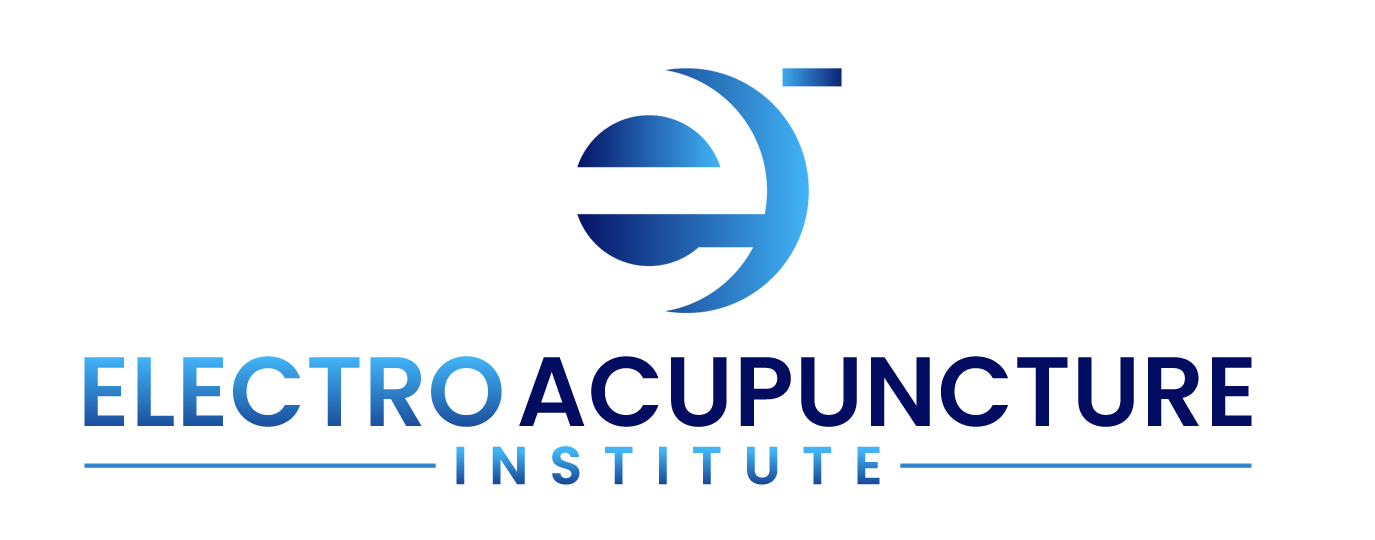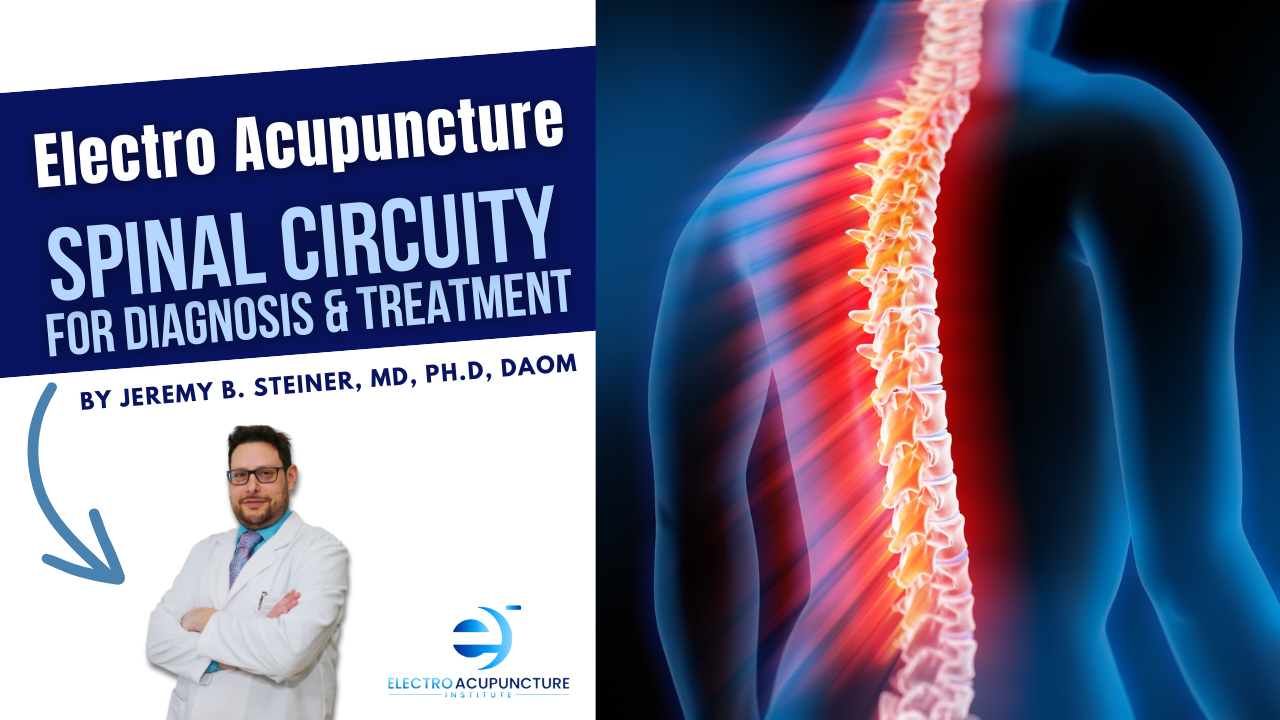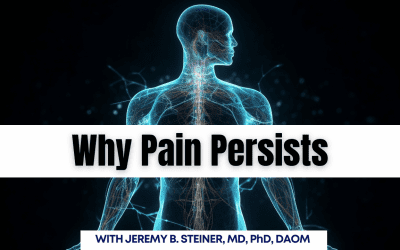A Terrain-Based System for Diagnosing and Treating Pain, Inflammation, and Internal Organ Dysfunction
What If Every Case of Pain or Organ Dysfunction Could Be Traced to the Spine?
What if you could diagnose and treat everything from hip pain to anxiety by reading electrical deficiency in the spinal nerves—
…and correcting it with precision?
That’s the power of Spinal Circuitry for Diagnosis and Treatment.
In this training, you’ll learn how to:
- Use the spine as a terrain-based diagnostic map
- Identify deficient neural levels linked to pain, inflammation, and organ dysfunction
- Treat those levels using segmental acupuncture and electromedicine
- Choose the right needling strategy based on your voltage output
- Understand how the spine connects tissue, organ, and emotional patterns
This approach blends electric medicine, spinal anatomy, and terrain theory acupuncture into one unified system.
Let’s jump in.
Watch the “Spinal Circuitry For Diagnosis and Treatment ” Video right here:
This is just a glimpse of what I recently taught at Electric Medicine Live 11.
If you want to learn how to diagnose accurately in 60 seconds, deliver first-visit results patients can feel, and build a clinic that grows through word of mouth referrals…
Check out my recent training replay where I laid it all out
🔎 The Nervous System Is the Terrain Map
Every organ, muscle, and fascia system in the body is fed by a spinal nerve.
When voltage drops at that nerve root, the downstream tissues suffer.
Pain shows up.
Dysfunction arises.
And if it persists long enough—disease begins to form.
This is why the spine is your best diagnostic tool.
It’s also your most efficient treatment strategy.
What we call Spinal Circuitry for Diagnosis and Treatment allows you to:
- Identify which spinal segments are electrically deficient
- Correlate them to tissue or organ dysfunction
- Build a treatment bracket around those levels
- And correct terrain at the source
This isn’t guesswork. It’s bioelectrical terrain mapping.
📍 How to Perform a Spinal Circuitry Diagnosis
Let’s walk through a real case:
A patient presents with:
- Right facial pain
- Right hip pain
- Anxiety
In a symptom-based system, this would look like three unrelated complaints.
But in terrain theory, we ask:
“Which spinal levels are deficient—and what systems do they feed?”
First, we palpate the spine.
Use your fingers to fall into the vertebral grooves and count upward or downward.
You’re looking for:
- Discoloration
- Blemishes
- Indentations
- Or simply patient-reported pain on pressure
These are signs that the spinal segment is deficient in voltage.
For this patient, we might find:
- T10–L2 corresponding to low back pain
- L3–L5 corresponding to hip pain
- T5–T8 potentially linked to organ stress contributing to anxiety
You now have your spinal diagnosis: T10 to S1.
That’s your terrain target.
🧠 Why This Works (And Why It’s Not Just About Pain)
Here’s what most systems miss:
The same spinal level that feeds a muscle also feeds an organ.
That means:
- Your patient’s hip pain could be linked to digestive stress
- Their upper back tension could be tied to emotional regulation
- Their skin blemish might reflect adrenal or immune imbalance
This is segmental acupuncture at its most elegant.
You’re treating the root by identifying where voltage dropped and dysfunction started.
🔧 Building Your Bracket (Treatment Setup)
Once you’ve identified the deficient spinal levels, you’ll now build a bracket to treat them.
Here’s the flow:
- Identify the segment range (e.g., T10 to S1)
- Go 2 vertebrae above the top segment
- Go 2 vertebrae below the bottom segment
- Create your treatment bracket around that zone
Your bracket strategy will depend on your equipment:
🔹 If You’re Using a Lower Voltage Device
(e.g., Pantheon, ITO, or traditional 9V electroacupuncture units)
- Use 8 needles
- Needle the Huatojiaji points (0.5 cun lateral to the spine)
- Distribute them evenly throughout the bracket
- Connect leads using the carrier + treatment frequency model
- Stimulate for 10–20 minutes
This method treats both neural and interstitial flow.
The Huato segment provides direct input to the spinal circuitry and local tissue.
🔹 If You’re Using a High Voltage Device
(e.g., Pointoselect Digital, Avasia ProSport)
- Use 4 needles total
- Focus on Du channel points over the vertebrae
- Place needles 2 above and 2 below your bracket
- Choose a Nogier frequency based on the neural level (see below)
- Stimulate for 10 minutes
This strategy requires fewer needles because the device penetrates deeper into the circuitry.
🎯 When to Use This Approach
Use Spinal Circuitry for Diagnosis and Treatment when you see:
- Chronic pain that doesn’t respond to local needling
- Inflammation that moves or shifts
- Pain patterns that mirror dermatome, sclerotome, or myotome maps
- Organ symptoms that accompany spinal stiffness or tenderness
- Emotional complaints that show up alongside musculoskeletal issues
You’re not treating symptoms—you’re treating voltage deficiency at the segmental level.
📡 Quick Nogier Frequency Recap for Spine Work
When treating with a device like the Pointoselect Digital, choose your frequency based on location:
- 292 Hz – Skin, surface tissue
- 146 Hz – Muscle and motor nerve regulation
- 73 Hz – Viscera, digestion, and emotional tone
- 36 Hz – Deep spinal roots and neuroendocrine reflexes
- 18 Hz and below – Suppressed terrain, trauma, and chronic stagnation
Choose the frequency that matches the tissue target.
That’s how you align your electric medicine with the body’s true needs.
🔁 Integration and Frequency of Treatment
Just like our terrain-based auricular protocol, your spinal treatments should follow a schedule based on severity.
- Light terrain breakdown (early pain or fatigue) → 5–10 sessions
- Moderate (chronic pain, functional organ issues) → 10–20 sessions
- Severe (multisystem involvement, emotional-organ patterns) → 20+ sessions
👉 Treat 2–3 times per week over 1–3 months.
👉 Recheck spinal circuitry every 1–2 visits.
The nervous system responds best to consistent stimulation.
When the terrain shifts, the circuit will change—and so should your bracket.
🧭 Clinical Observations and Pro Tips
- Patients often report emotional shifts when spinal circuitry is corrected
- Pain that was “unreachable” starts resolving within days
- The bracket works because it doesn’t force—it activates
- You’ll see color return, tension drop, and the patient breathe deeper—right on the table
This system isn’t just about pain relief.
It’s about treating the spine as the command center for both physical and emotional terrain.
✅ Final Thoughts: The Spine Is a Map—Learn to Read It
Every organ. Every emotion. Every pain pattern.
They all trace back to spinal circuitry.
When voltage drops at the root, dysfunction appears downstream.
By diagnosing the spine with your hands and treating with the right combination of needles and electricity, you’re restoring the electrical integrity of your patient’s terrain.
And that changes everything.
Thanks for being part of this work.
For the most cutting edge training in electric medicine, visit electroacupunctureinstitute.com
Thanks for being here.
Peace and Bliss,
Jeremy B. Steiner, PhD, MD, DAOM






